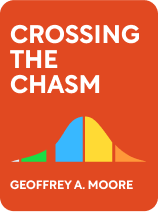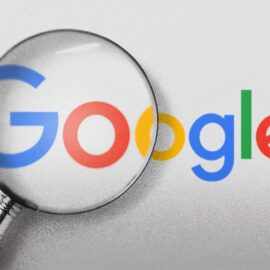

This article is an excerpt from the Shortform book guide to "Crossing the Chasm" by Geoffrey Moore. Shortform has the world's best summaries and analyses of books you should be reading.
Like this article? Sign up for a free trial here .
What is a customer profile? What characteristics does a target customer profile typically include?
A “customer profile” is simply a description of an archetypical target customer. A customer profile should include characteristics like age, job title, industry, gender, race, and interests—especially as their interests relate to your product.
Here are some things to consider as you create customer profiles for your business.
Geoffrey Moore: Generating “Customer Profiles”
Moore advises that you make your customer archetypes as lifelike as possible so your intuition can accurately predict their behavior.
(Shortform note: Jack Matsen blogs about creating customer profiles for your current customers. Matsen breaks down his profile into four categories of characteristics: demographics (race, sex, age, income, education, job title, family status), psychographics (lifestyle, goals, interests, values), behaviors (purchase history, product usage, customer loyalty), and geographics (city, state, region). While certain behavioral characteristics, like purchase history, may not be relevant at this stage of the adoption cycle, Matsen’s organization could work well for Moore’s customer profiles.)
To develop your list of customer profiles, Moore recommends soliciting anecdotes from people in your company who have experience interfacing with existing customers. Make sure to capture all known customers’ uses of your product, plus any other uses that seem plausible. Moore estimates that after you generate 20 to 50 customer profiles, it will become apparent that some of them represent the same archetype, leaving you with about 10 unique characterizations.
| Jungian Customer Profiling Some sources suggest using the 12 standard “Jungian archetypes,” psychological profiles based on the work of Swiss psychiatrist Carl Jung as a starting or reference for developing customer profiles. In brief, the 12 Jungian archetypes are: The “hero” is on a quest to prove his worth. The “everyman” carefully follows the crowd. The “innocent” is naive and vulnerable. The “lover” values relationships above all else. The “caregiver” is someone whose life revolves around helping others. The “explorer” wanders through life looking for meaning. The “rebel” finds meaning in challenging the accepted norm. The “artist” wants to make a lasting impression on the world through creativity. The “jester” just wants to have a good time. The “sage” is on a quest for truth. The “visionary” is someone whose life revolves around achieving great things. The “ruler” is determined to maintain control of her domain. Assuming that a couple of the Jungian archetypes don’t fit any realistic user of your product, that leaves about 10 unique characters, consistent with Moore’s estimate. |
Build Purchasing Scenarios Based on Customer Profiles
Once you have your list of hypothetical customers, you can flesh them out into purchasing scenarios. Each scenario ultimately represents a market niche. Moore suggests formatting each scenario as three sections, all of which should fit on a single page:
1. The first section is basically your customer characteristization, with demographic information and so forth. Moore also notes that for some scenarios more than one person is involved in the purchase. He differentiates between the “economic buyer,” who approves funding for the purchase, the “technical buyer,” who sets up the product once it is purchased, and the end user, who uses it once it is set up. Depending on the scenario, these might all be the same person, or might be different people. If they are different people, Moore reminds you to include customer profiles for all of them.
(Shortform note: While the terms “technical buyer,” “economic buyer,” and “end user” are widely used, some sources refer to the “end user” as the “functional buyer” instead.)
2. The second section is a description of the scenario without your product. In the current market, what are your prospective customers attempting to accomplish, and how are they going about it? What problems do they have with this approach that your product could solve? What are the financial consequences of these problems?
3. The third section is a description of the scenario with your product. How can your customers use your product to achieve their goal? What features of your product enable them to succeed? What financial benefits will they reap as a result?
| Sample Purchasing Scenario For this example, we will assume you have developed a revolutionary weld inspection device, but have not yet selected a target niche. Demographics: Marvin is a Hispanic male in his 40’s. He’s a small-business owner-operator, who provides welding services to local farmers. He is therefore a combination of an economic buyer, a technical buyer, and an end user. Scenario without our product: Marvin drives his welding truck to a customer’s farm, where he repairs cracks and holes in aluminum irrigation pipes by welding them closed. He does a basic visual inspection of his welds and doesn’t notice any defects. The next day, the farmer calls him again and says the pipe is still leaking, so Marvin drives back out to his customer’s farm. He finds that a couple of his welds had hairline cracks that he couldn’t see, but that caused them to fail when the irrigation pipe was pressurized. He’s able to fix the pipe, but he loses half a day on rework, and his customer loses a day of irrigation. Scenario with our product: As before, Marvin drives out to a customer’s farm to repair irrigation pipes. After completing his welds, Marvin connects our weld inspection probe to his phone and scans them. He identifies hairline cracks in a couple of welds that might have been caused by impurities in the aluminum. He grinds out the cracks, re-welds them, and uses our weld inspection probe to verify that they’re solid. Relative to the scenario without our inspection probe, he saves half a day and the cost of making an extra trip. He also cultivates a better relationship with his customers, because he can guarantee all his welds are water-tight. |
| Customer Journey Maps Business blogs describing how to create customer profiles and purchasing scenarios often advocate using “customer journey maps,” which chart your customer’s interactions with your company as they become acquainted with your product, decide to buy it, and finally, use it to achieve a goal. A journey map highlights every point of contact between the customer and your company, as well as the customer’s decision points along the way. The second and third parts of Moore’s purchasing scenarios could be developed into a type of customer journey map, tracking the problem your customer needs to solve and how they use your product to solve it. While customer journey maps are often used later on to identify pain points in the purchasing process and streamline the sales process, considering them up front as you select your niche could help you determine how easily your customer will be able to assemble the whole product. We’ll discuss assembling the whole product in the next chapter. |

———End of Preview———
Like what you just read? Read the rest of the world's best book summary and analysis of Geoffrey Moore's "Crossing the Chasm" at Shortform .
Here's what you'll find in our full Crossing the Chasm summary :
- An explanation of the chasm phenomenon that many new high-tech products face
- How to pilot a product across this chasm to mainstream success
- The problems with the Technology Adoption Life Cycle (TALC) model






